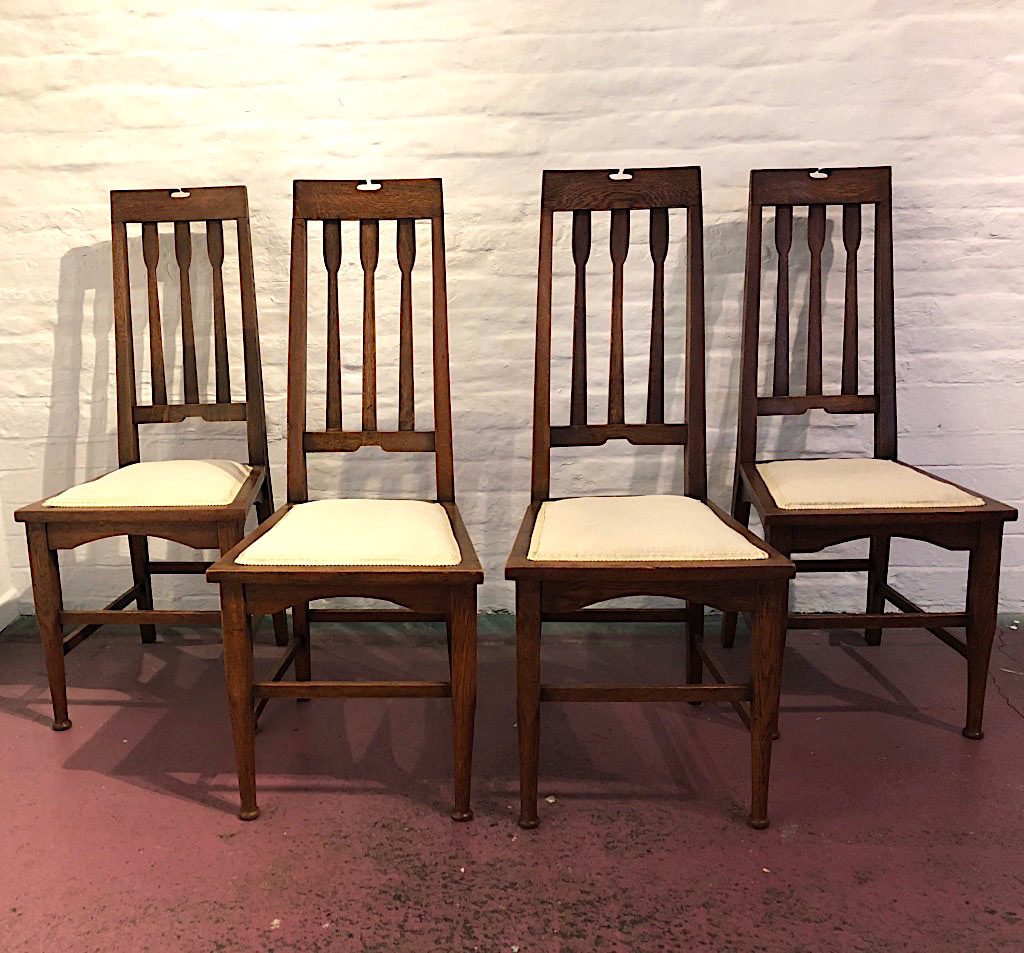The Glasgow School
The Four
“The Four” consisted of four young individuals; James Herbert McNair, Frances Macdonald, Margaret Macdonald, and Charles Rennie Mackintosh. Frances Macdonald and Margaret Macdonald were sisters and were therefore dubbed as the “Macdonald sisters”. The “Four” met as students at the Glasgow School of Arts and the alliance was formed at that same place. Both McNair and Mackintosh were apprentice architects at the institution and the Macdonald sisters attended the school as day students. A great source of inspiration for the work done in this movement was Jan Toorop. (Gsa.ac.uk, n.d.).
The key features of this movement are elongation, symmetry and linear structures. Most of the artworks contained women who were depicted as tall beings. The legs or torsos were often stretched out and these images were always symmetrical. One half of the art piece would always be an exact reflection of the other half. Floral and straight-lined structures are used simultaneously to create a new look. (Abacus, 2004).

The Scottish Musical Review, C. R. Mackintosh, 1896, colour lithograph poster, Scotland (Abacus, 2004).
This is one of four posters designed by Charles Mackintosh. A figure that seems to be a woman is shown standing with four birds silhouetted against a large halo, with peculiar circular shapes above her head. The poster was unusual for its time and received deconstructive criticism. This shows how the work was discouraged from the public. (Abacus, 2004).
A Contemporary Tribute

Glasgow style chairs, Oak wood, Penrose Antiques Ltd, 107 cm x 44.5 cm, West Yorkshire, United Kingdom (Loveantiques.com, 2019)
This image is a good representative of the style used in the Glasgow School art movement. The element of symmetry can be identified in this image. The chairs can be divided vertically and the one half of the said chair would still be an exact replication of the other half. The backrests of the chairs are elongated. This means that the backrests are greater in length than any conventional chair would be. This makes the chair taller. (Loveantiques.com, 2019)
Clean, straight lines were used in this design. This emphasizes one of the main principles. Charles Mackintosh had a very noticeable theme to his art style. This was the use of rising vertical lines that often had subtle curves at the ends. This softened the meeting points of both horizontal and vertical type lines. The structures he used for his furniture were simple, yet also decorated with delicate ornaments. This was applied to the above image as the chairs in the image are rectangular and, as mentioned, long. (Purvis, 2016)
Sources
Abacus, S. (2004). TheGlasgowStory: Scottish Musical Review 1896. [online] Theglasgowstory.com. Available at: https://www.theglasgowstory.com/image/?inum=TGSE00492 [Accessed 26 Sep. 2019].
Gsa.ac.uk. (n.d.). Our History. [online] Available at: http://www.gsa.ac.uk/about-gsa/history-and-future/our-history/ [Accessed 27 Sep. 2019]. (Gsa.ac.uk, n.d.)
Loveantiques.com. (2019). Set of Four Glasgow School Arts & Crafts Chairs. [online] Available at: https://www.loveantiques.com/antique-chairs/arts-and-crafts-(1880-1910)/set-of-four-glasgow-school-arts-and-crafts-chairs-138346 [Accessed 27 Sep. 2019].
Purvis, P. B. M. a. A. W., 2016. 6 ed. Hoboken, New Jersey(United States of America): Wiley.
The Art Story. (2019). Mackintosh Artworks & Famous Architecture. [online] Available at: https://www.theartstory.org/artist/mackintosh-charles-rennie/artworks/#pnt_1 [Accessed 26 Sep. 2019]. (The Art Story, 2019)

